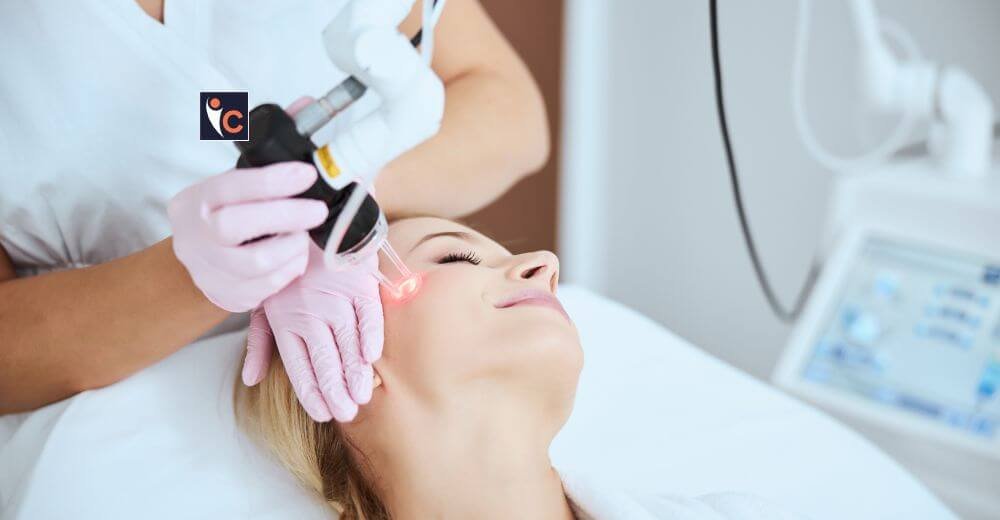By 2025, the cosmetic medicine scene has made a dramatic shift with non-invasive treatments taking center stage. These procedures, which involve little to no downtime, pain, and risks associated with conventional surgery, have become increasingly popular. Spurred by advances in technology, evolving attitude towards society, and the increasing desire for beauty at affordable prices, non-invasive cosmetic treatments have become the backbone of the aesthetic world.
This article examines the reasons behind their popularity, the most sought-after treatments, and what this means for the future of cosmetic medicine.
The Attractiveness of Non-Surgical Treatments
Non surgical facial treatments are attractive to many people, including millennials who need preventative care and older people who need to reverse signs of aging. Unlike surgical procedures such as facelifts or liposuction, these treatments require no incisions, general anesthesia or long recovery period. This has democratized cosmetic treatments so that people who have active lives and cannot afford to take weeks off can now afford them.
Technological Innovations Driving Growth
The higher speed of technology has been the prime stimulus in the evolution of non-invasive therapies. The creation of advanced devices and methods has rendered treatments more effective, safe, and relaxing, thus being able to draw more individuals towards them. As an illustration, the skin renewal has been changed by laser technologies, such as fractional CO2 lasers and picosecond lasers. This kind of equipment is precise to fine wrinkles, lines, hyperpigmentation and yields the results comparable to surgical procedures but with none of the risks.
Ultrasound and radiofrequency (e.g. Ultherapy and Thermage) have become more popular as well. The treatments stimulate production of collagen deep into the skin, causing face and body lifting and tightening. These devices became available as portable and home-use devices in 2025, and this feature allows consumers to prolong the results between professional sessions, which makes the market even faster.
Bestselling Non-Invasive Procedures in 2025
A number of non-surgical treatments have taken over the cosmetic medicine industry in 2025. Among the most in-demand are:
Botox and Fillers: Botox remains the treatment of choice in reducing dynamic wrinkles such as forehead lines and crow lines. Dermal fillers work by adding volume back to the cheeks, lips and the under-eyes. In 2025, micro-dosing techniques, where a patient is offered to use less of the product to produce a less pronounced effect became a more common practice among younger customers who visit clinics to get preventative treatments.
Laser Skin Resurfacing: Lasers are used because there are several different reasons to use them e.g. to treat acne scars, sun damage and blotchy skin. The introduction of less invasive, no-downtime lasers within the last few years has made these procedures appealing to busy people as well.
Cryolipolysis (Fat Freezing): The CoolSculpting machines employ non-invasive cooling to destroy the bulges of stubborn fat. As of the year 2025, advances in the technology around the idea of cryolipolysis have made the procedure less time-consuming and maximised the outcomes to result as first-line therapy in the area of body contouring.
The Role of Accessibility and Affordability
The affordability of non-invasive treatments has been one of the most important reasons for their popularity. While surgery itself is usually expensive, running into thousands of dollars, non-invasive treatments are comparatively more affordable, ranging from a few hundred dollars to a few thousand dollars for each session. Financing schemes, subscription-based beauty treatments, and loyalty programs provided by clinics have also brought down the entry costs.
Moreover, the spread of medical spas and aesthetic clinics has rendered the procedures more geographically accessible. Urban and suburban dwellers alike in 2025 enjoy specialized centers manned by trained professionals, making high-quality care easily accessible for most.
Challenges and Considerations
Despite the popularity, non-invasive procedures do not come without problem. The unqualified entry of therapists and unregulated offices has led to increased safety and efficacy concern. In 2025, regulators have been enforcing by requiring the practitioner to be certified and more guidelines on the use of devices. Patients are also urged to properly vet providers and seek out board-certified dermatologists or plastic surgeons.
Another factor is the possibility of over-treatment. The ease and relatively minor risk of non-surgical treatments cause some to seek too many treatments, with unnatural results or addiction. Education and accurate expectations are important to providing good outcomes.
The Future of Non-Invasive Cosmetic Medicine
The non-surgical cosmetic medicine market is by no means slowing down ahead of the curve. The results will be even more accelerated by revolutionary technologies, like AI-driven skin analysis software and individual treatment protocols. The blending of regenerative medicine, including platelet-rich plasma (PRP) and stem cell treatments, will also enhance current procedures, providing more comprehensive methods for anti-aging and skin wellness.
Sustainability is also on the cards, with green products and devices becoming popular. There are biodegradable fillers and energy-efficient lasers being designed to meet increasing consumer demand for environmentally friendly practices.





